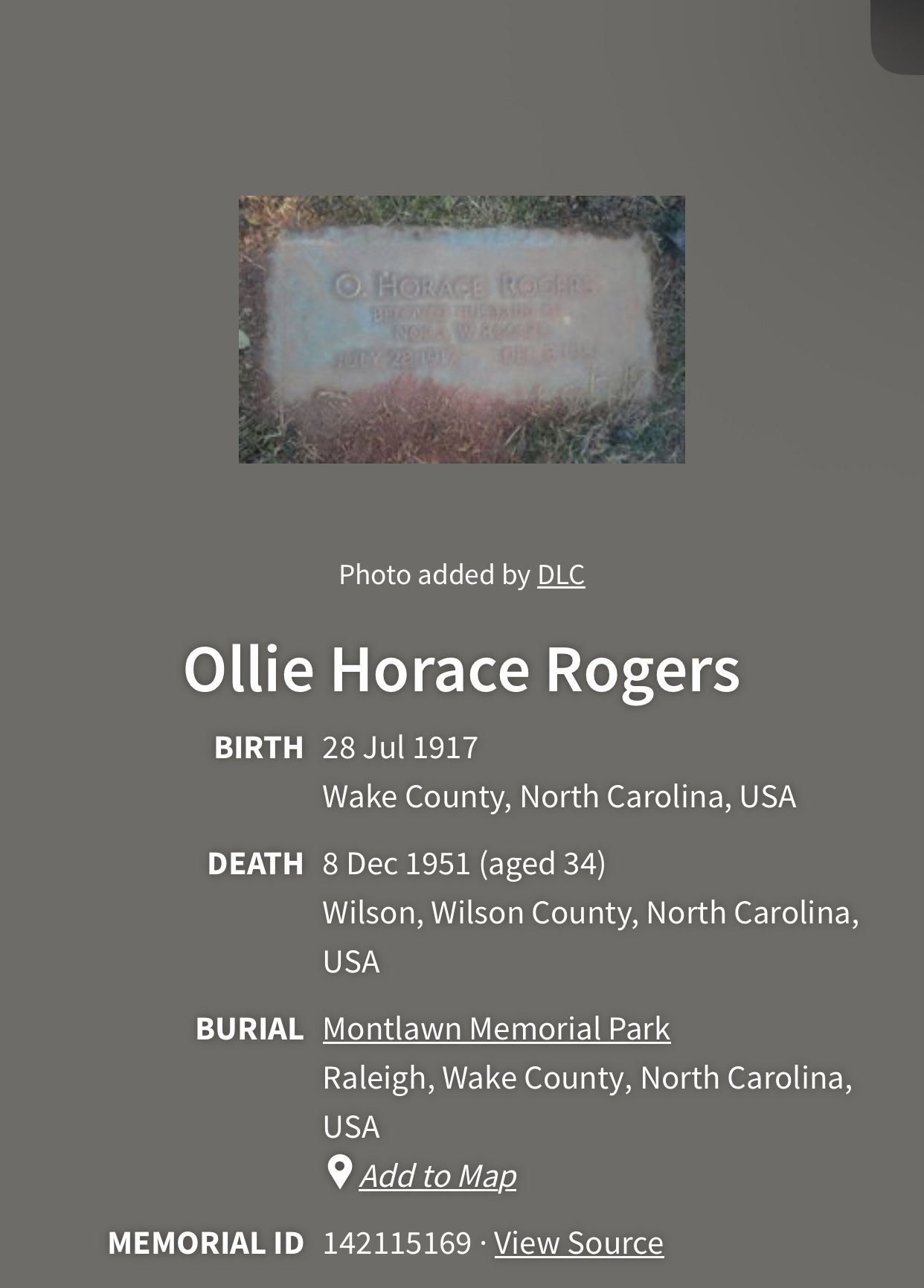
In the quiet crossroads of Wake County, North Carolina—near what we now know as Highway 98 and Highway 96—Ollie Horace Rogers, my paternal great-grand uncle, entered the world on July 28, 1917. He was the first child of Charles Reuben Rogers Sr., a farmer, and Candis Louis Pearce, a homemaker just 21 years old. Though Ollie was their firstborn, he was welcomed into a blended household—his father had four children from a previous marriage, three of whom had already left the home by the time of the 1920 census.
That census, taken when Ollie was just two years old, placed the family in a humble home near Zebulon and Wake Forest Roads—a landscape that remains familiar to me, though the roads now bear different names. The 1930 census, however, delivered a personal jolt: I discovered that the Rogers family had relocated to the mill houses of Downtown Wake Forest. My husband grew up in one of those houses. I have driven past those same houses countless times, never knowing that my ancestors once lived within their walls.
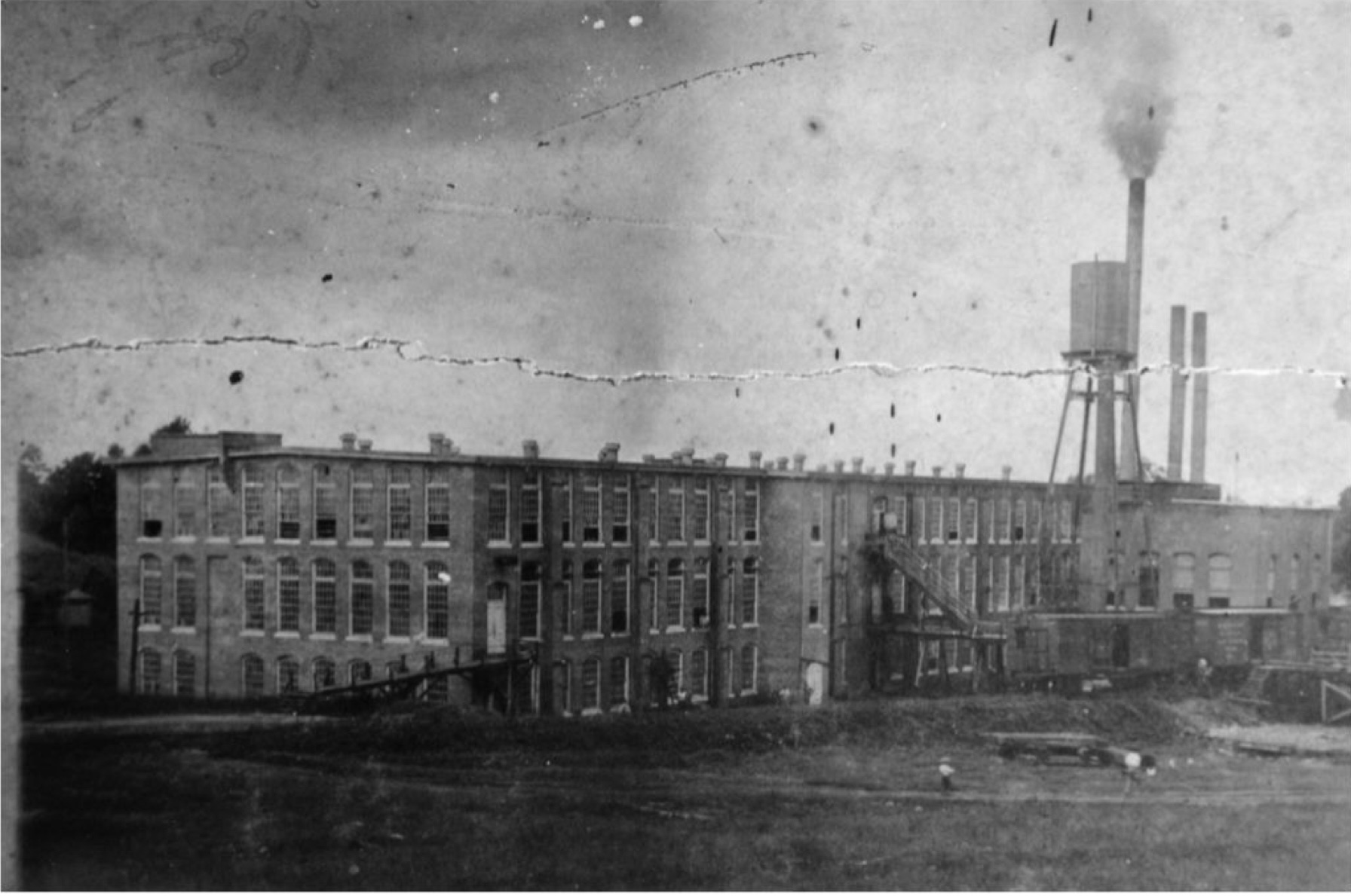 Wake Forest Historical Museum. Wake Forest Historical Museum, Wake Forest Historical Museum Accessed 1 Aug. 2025.
Wake Forest Historical Museum. Wake Forest Historical Museum, Wake Forest Historical Museum Accessed 1 Aug. 2025.
Charles, Ollie’s father, and one of his older half-brothers were working at the Wake Forest Cotton Mill during that time. The mill, which still stands today in a new life as an apartment complex, was once the lifeblood of this small Southern town. Twelve-year-old Ollie was listed as still in school—just a boy growing up in a working-class family during the early days of the Great Depression.
But then the trail goes quiet—at least until 1940.
I never found Ollie in the 1940 census. Instead, I found him in military records: enlisting into the U.S. Army on October 15, 1940, at Fort Bragg, North Carolina. He was 23 years old, a sales clerk by trade, and had completed grammar school—likely the extent of his formal education. He stood 5'9" and weighed 131 pounds, joining the Quartermaster Corps as a private.
Two years later, in true dramatic fashion, Ollie and his sweetheart, Elizabeth Bishop, ran off to Dillon, South Carolina, to marry on December 20, 1942. He was then listed as 1st Sergeant Horace Rogers, stationed at Fort Bragg. Their son, Horace David Rogers, was born just months later, on May 7, 1943—a likely reason for the elopement.
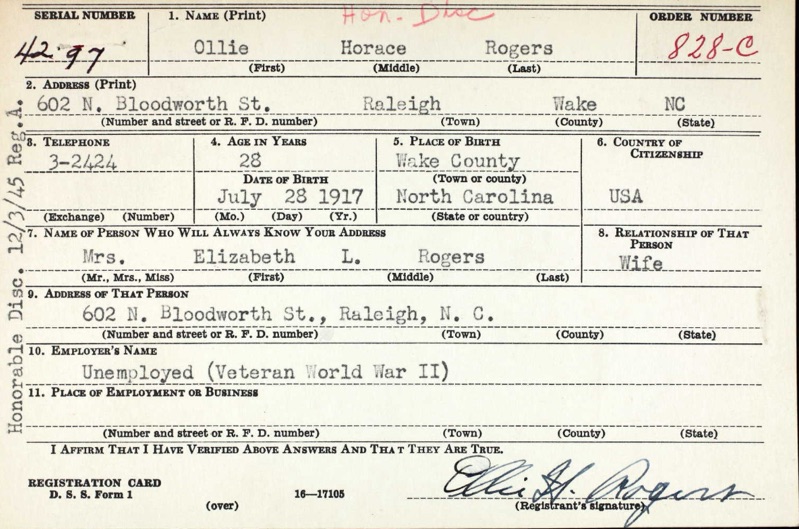
Ollie saw the war years through, though not without injury. In May 1945, he was admitted to a military hospital for a foot injury. The records don’t tell us how it happened, only that he was discharged a month later in June. He survived the war, but peace did not bring lasting stability.
Though there’s no record of divorce, Ollie’s marriage to Elizabeth ended sometime after the war. By 1950, Ollie had started over. On June 29, 1950, he once again traveled to South Carolina—this time to Chesterfield—to marry Nora Williams, a divorced nurse. Ollie was 33. Nora had already lived a full life of her own, and for a brief moment, it seemed they might build something new together.
 Ollie's home in 1945
Ollie's home in 1945
But six months later, tragedy struck.
On December 8, 1950, in Wilson, North Carolina, Ollie Rogers died in a car accident while delivering Krispy Kreme doughnuts. The crash, involving a milkman, left "milk and doughnuts spilled all over the intersection," according to the newspaper article. It was a haunting and almost poetic image—so ordinary, so American, and so final.
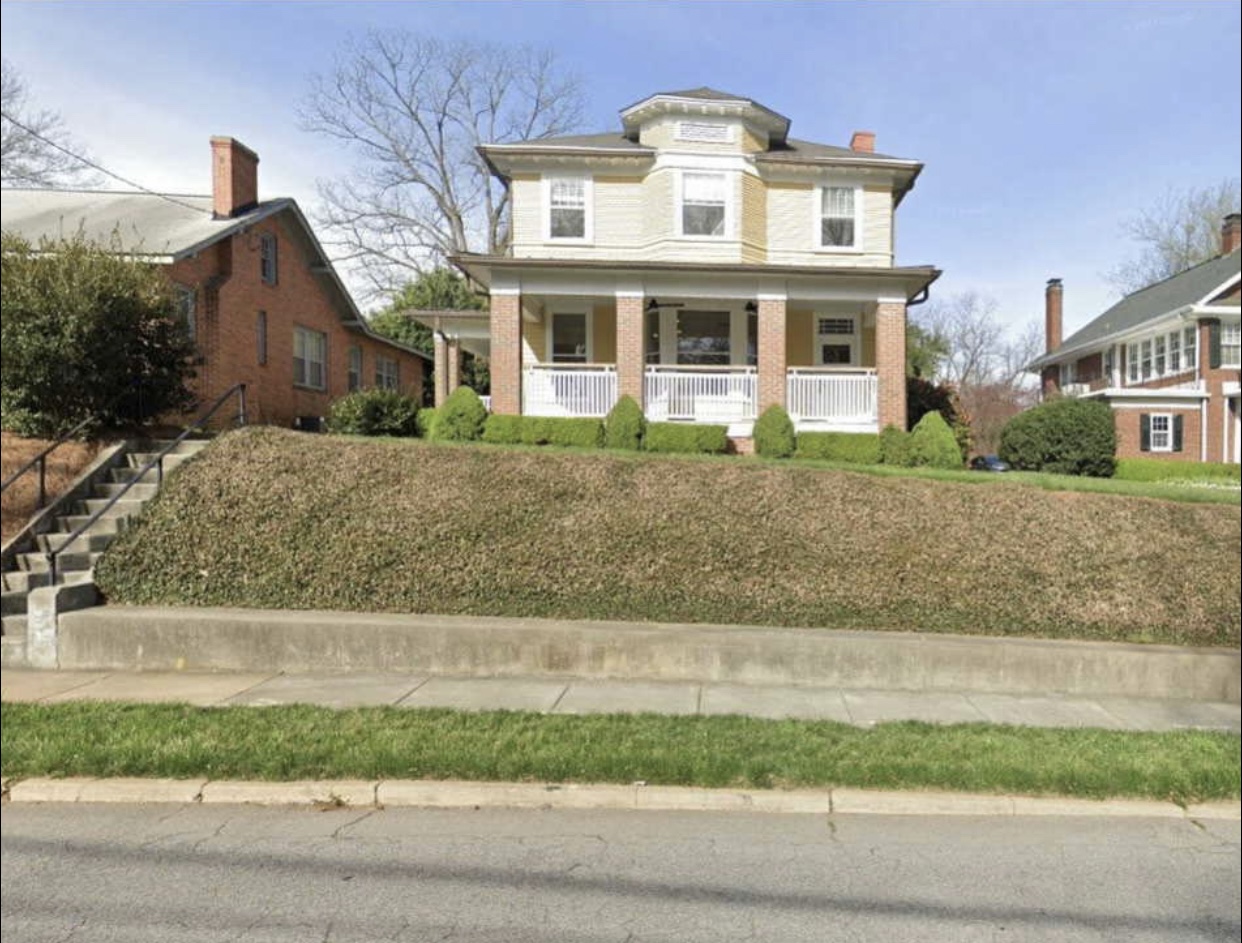 Ollie's home at the time of his death.
Ollie's home at the time of his death.
He left behind a new bride and a young son from his first marriage. Elizabeth, his first wife, remarried, and her new husband adopted their son—giving him the name Horace David Rogers Yates. Nora, too, eventually remarried.
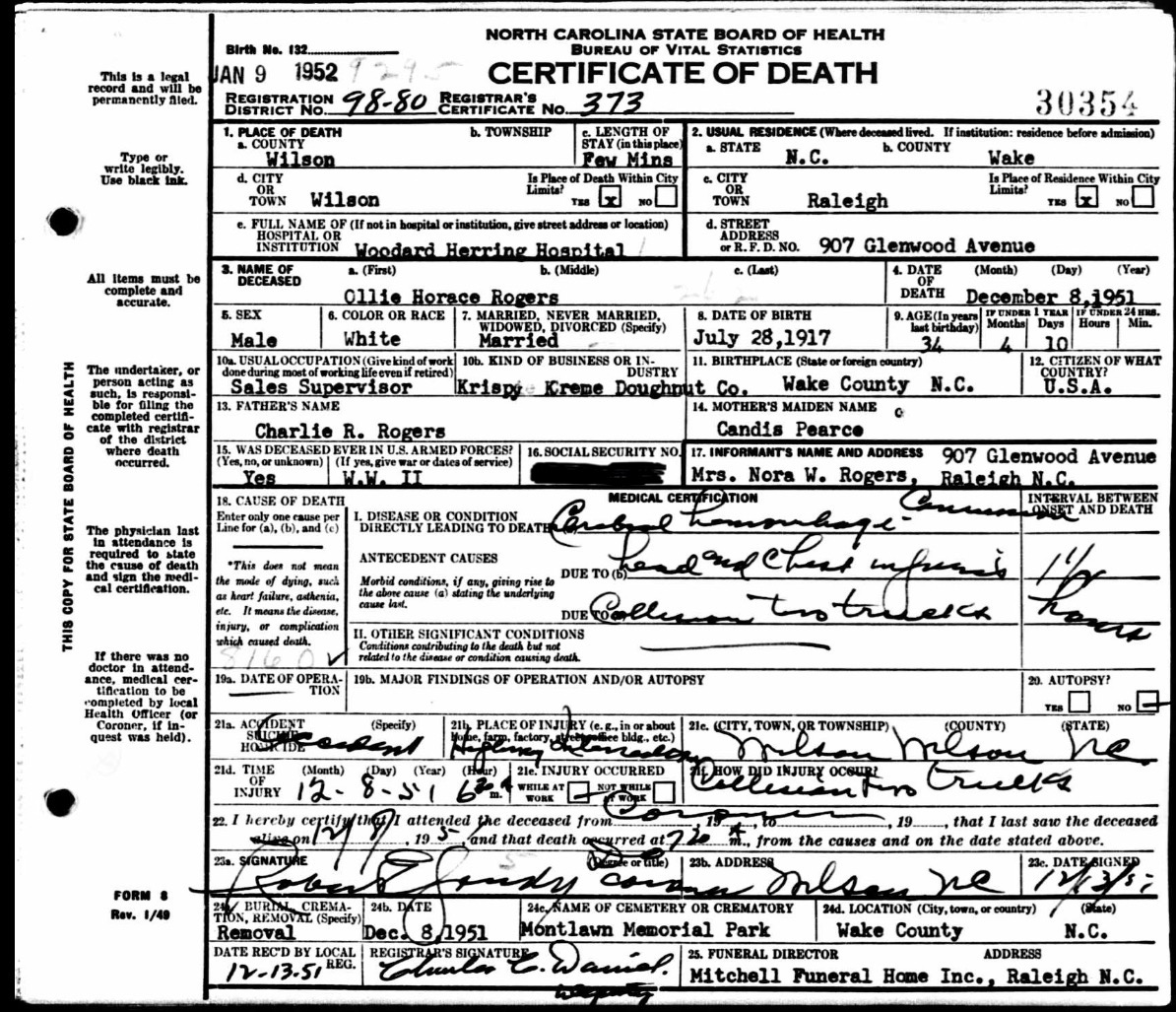
Ollie’s life was short—just 33 years—but it spanned war, Depression, migration, marriage, fatherhood, and an untimely, almost cinematic death. His story is not one of grandeur, but it is deeply human, filled with the textures of real life: love, labor, loss, and legacy.
And now, as I pass by those same mill houses, I no longer see anonymous buildings or traffic signs—I see a life that mattered. A great-grand uncle whose footsteps echo in unsuspecting places.
Ollie Horace Rogers may not be remembered in history books, but he lives on here—in the stories we tell and the roads we travel every day.

To learn more about Glen Royal Mill Village in Wake Forest, North Carolina be sure to check out Wake Forest Historical Museum
No comments:
Post a Comment